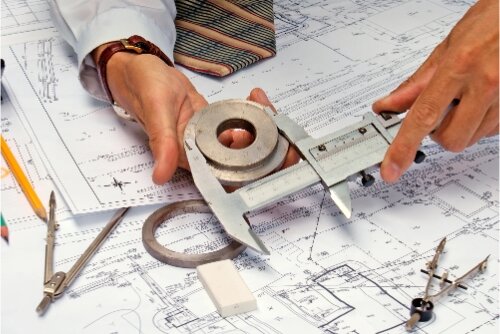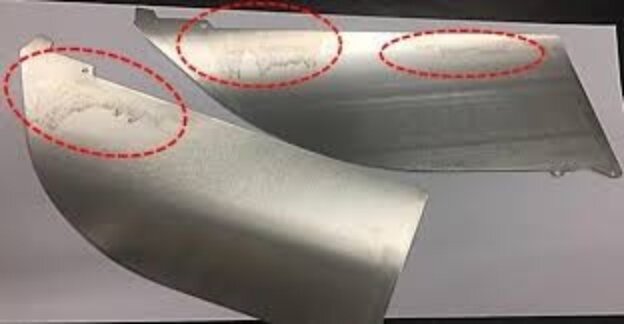Need help with consistent cuts in your machining projects? Frustrated by slow production times and subpar finishes? End milling might be the solution you’ve been searching for. This versatile machining process can transform your manufacturing capabilities, offering unparalleled precision and efficiency.
End milling is a cutting process that uses rotating tools to remove material from a workpiece. They come in various types, each designed for specific applications. From roughing to finishing, these tools can handle various materials and create complex shapes with high precision.
The right end mill can make a difference in your machining process. Let’s explore the end milling process and different types of end mills to help you choose the best tool for your project.

Basics of End Milling
What is an End Mill?
End mills are cutting tools used in milling machines. They have teeth on their end and sides, allowing them to cut in multiple directions. These tools are crucial for creating precise shapes and features in various materials.
Types of end mills include:
- Flat-end mills: Ideal for producing clean, flat surfaces. The absence of a radius, or a minimal radius, on the cutting edge makes these suitable for a wide range of applications.
- Ball nose end mills: These have a rounded end profile ideal for 3D contour work, profiling, and jobs requiring precise maneuvering around intricate shapes.
- Corner radius end mills: These end mills have a radius ground on the corners of the cutter, which provides a more potent cutting edge that offers less chipping and longer tool life.
Each type serves a specific purpose in machining operations.
Material Considerations
Common materials used for end mills:
- High-speed steel (HSS): High-speed steel (HSS) is versatile and cost-effective, suitable for general milling softer materials like aluminum.
- Carbide: Carbide end mills are extremely hard and durable, ideal for high-speed cutting of rigid materials like stainless steel.
- Cobalt: Cobalt end mills offer enhanced heat resistance and durability, perfect for tough, high-strength alloys.
Material Properties and Their Impact on Milling Performance
The choice of material affects the tool’s performance, durability, and cost. HSS is cost-effective but wears quickly. Carbide offers excellent hardness and heat resistance. Cobalt provides a balance between HSS and carbide.
When to Choose an End Mill?
Choosing the right end mill for your milling process can significantly affect the quality and efficiency of your work. Here are a few considerations:
- Create slots or channels.
- Mill flat surfaces
- Cut complex 3D shapes.
- Perform plunge cuts
- Machine hard materials
End mills excel in tasks that require precision and versatility. They’re ideal for both roughing and finishing operations in CNC machining.
End Milling Techniques
Conventional vs. Climb Milling
Two main techniques dominate end milling: conventional and climb milling. Let’s explore their differences:
Conventional Milling:
- The cutter rotates against the feed direction
- Pros: Better for older machines, handles varying depths well
- Cons: Higher tool wear, rougher finish
Climb Milling:
- The cutter rotates with the feed direction
- Pros: Smoother finish, less tool wear, better chip evacuation
- Cons: Requires more rigid setups, not suitable for all machines
Milling Operations
End mills excel in various operations:
Slotting:
- Creates grooves or channels in the workpiece
- Requires full cutter engagement
Plunging:
- Cuts vertically into the material
- Helpful in creating holes or pockets
Facing:
- Produces flat, smooth surfaces
- Often used as a finishing operation
Advanced Techniques
Ramp Cutting:
- Gradually enters the workpiece at an angle
- Reduces tool stress and improves chip evacuation
Helical Milling:
- Combines circular and linear motion
- Ideal for creating large holes or improving surface finish
Trochoidal Milling:
- Uses a circular tool path with minor radial cuts
- Enhances tool life and allows higher feed rates

Machine and Tool Setup
Selecting the Right End Mill
Choosing a suitable end mill is crucial for successful machining. Here are vital factors to consider:
- Material: The end mill’s material affects its durability and performance. Standard options include high-speed steel (HSS) and carbide.
- Coating: Coatings enhance tool life and cutting efficiency. TiN, AlTiN, and ZrN are popular choices.
- Flute Count: 2-3 flutes for aluminum and plastics. 4+ flutes for steel and more rigid materials.
Match your end mill to the workpiece. Use coated carbide for tough steels. Opt for uncoated HSS for softer materials like brass.
Machine Setup
Proper machine setup ensures optimal end-milling performance:
- Machine Types: CNC mills and vertical and horizontal machining centers are ideal for end milling operations.
- Optimal Setup: Ensure rigid workpiece fixturing, proper tool alignment, and appropriate cutting speeds and feeds.
Correct machine and tool setup lays the foundation for precise, efficient end-milling processes.
Troubleshooting and Optimization
Common Issues in End Milling
Tool Wear and Breakage
End mills face constant stress during machining. This leads to wear and potential breakage. Watch for signs like increased cutting forces or poor surface finish. Replace tools promptly to maintain quality and prevent costly damage.
Surface Finish Problems
Rough surfaces often result from improper cutting parameters. Adjust feed rates and spindle speeds to achieve the desired finish. Consider using coated end mills for improved surface quality on challenging materials.
Tool Deflection
Long or thin-end mills can bend under cutting forces. This causes dimensional inaccuracies. Use shorter tools when possible and take lighter cuts to reduce deflection. Rigid workholding also helps minimize this issue.
Optimization Strategies
Speeds and Feeds Adjustments
Fine-tune cutting parameters for each material and operation. Start with recommended values and adjust based on results. Higher speeds often improve productivity, but balance this with tool life and part quality.
Cooling and Lubrication Techniques
Proper cooling extends tool life and enhances surface finish. Use flood coolant for general milling. Try high-pressure coolant or minimum quantity lubrication (MQL) systems for deep pockets or complex materials.
Tool Path Optimization
Innovative tool paths reduce cycle times and improve tool life. Use trochoidal milling for slot cutting. Employ high-efficiency milling strategies to maintain consistent tool engagement. CAM software can help generate optimal tool paths for complex parts.
Applications of End Milling
Aerospace
End milling plays a crucial role in aerospace manufacturing. It creates lightweight yet strong components from aluminum and titanium alloys. Precision milling produces complex airfoil shapes for turbine blades and intricate structural parts for aircraft frames.
Automotive
The automotive industry relies heavily on end milling. Engine blocks, cylinder heads, and transmission cases are all shaped using this versatile process. End mills also create molds for plastic components and machine custom parts for high-performance vehicles.
Electronics
In electronics manufacturing, end milling shines in creating chassis and heat sinks. It’s perfect for machining circuit board substrates and forming precise channels for cooling systems. The process also helps produce small, intricate consumer electronics and medical device components.

Differences Between End Milling vs Drilling
End milling and drilling are distinct machining processes. Each has its strengths and applications.
End milling uses a rotating cutting tool to remove material from various angles. It can create flat surfaces, contours, and complex shapes. End mills move both vertically and horizontally, offering greater flexibility.
Drilling, on the other hand, focuses on creating holes. It uses a drill bit that moves only vertically into the workpiece. Drilling is faster for hole-making but is limited to cylindrical features.
End milling allows for side cutting and plunging, making it more versatile. It’s ideal for creating pockets, slots, and 3D contours. Drilling excels at producing deep, straight holes quickly and efficiently.
Choose end milling for complex shapes and surface features. Opt for drilling when you need simple, cylindrical holes. Many projects combine both processes for optimal results.
Conclusion
End milling is a versatile and widely used machining process capable of delivering precision and intricacy that few other machining methods can match. By understanding the different types of end mills, the materials they are best suited for, and the appropriate techniques for their use, manufacturers can achieve superior results across various industries, from aerospace to electronics.
Having explored the details of common materials used in end mills, you now understand which type may be best suited for your specific machining needs. Should you require further assistance or wish to discuss end milling options, please do not hesitate to contact Shengen for expert guidance and services.
FAQs
What is the best type of end mill for stainless steel?
For stainless steel, use cobalt or carbide end mills. These materials offer excellent heat resistance and maintain sharpness. Choose a 4-flute design for better chip evacuation. Variable helix geometry helps reduce chatter in this challenging material.
How do I choose between upcut and downcut milling techniques?
Upcut mills push chips upward, ideal for deep pockets and through-cuts. They provide excellent chip evacuation but may cause top-edge fraying.
Downcut mills push chips downward. They’re great for clean top edges on wood or composites. However, they can compact chips in deep cuts.
Choose based on your material and desired finish. Many jobs benefit from using both types strategically.
What are the signs of a dull end mill, and how do I address it?
Signs of a dull end mill include:
- Increased cutting forces
- Poor surface finish
- Excessive heat generation
- Unusual noise or vibration
Address dullness by:
- Replacing the tool
- Resharpening (if possible)
- Adjusting cutting parameters
- Using proper coolant
Regular tool inspection and timely replacement prevent quality issues and machine damage.
Can end milling be used for materials other than metals?
Absolutely! End milling works well on plastics, composites, and wood. Adjust your cutting parameters and tool selection for each material. Use specialized coatings for abrasive materials. High-speed steel (HSS) end mills often suffice for softer materials like plastics.
More Resources:
Choosing the Right End Mill – Source: Mandmsales
Optimizing Your Milling Process – Source: Linkedin
End Milling vs. Drilling – Source: YIDA
Hey, I'm Kevin Lee

For the past 10 years, I’ve been immersed in various forms of sheet metal fabrication, sharing cool insights here from my experiences across diverse workshops.
Get in touch

Kevin Lee
I have over ten years of professional experience in sheet metal fabrication, specializing in laser cutting, bending, welding, and surface treatment techniques. As the Technical Director at Shengen, I am committed to solving complex manufacturing challenges and driving innovation and quality in each project.




